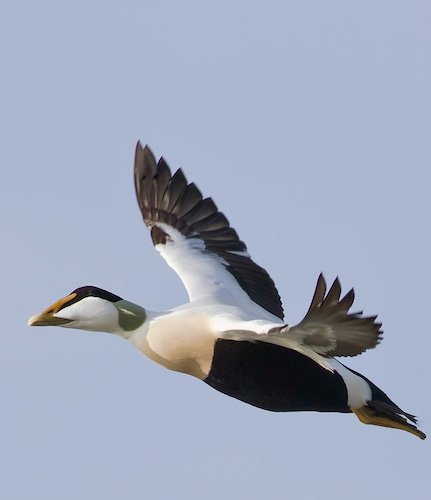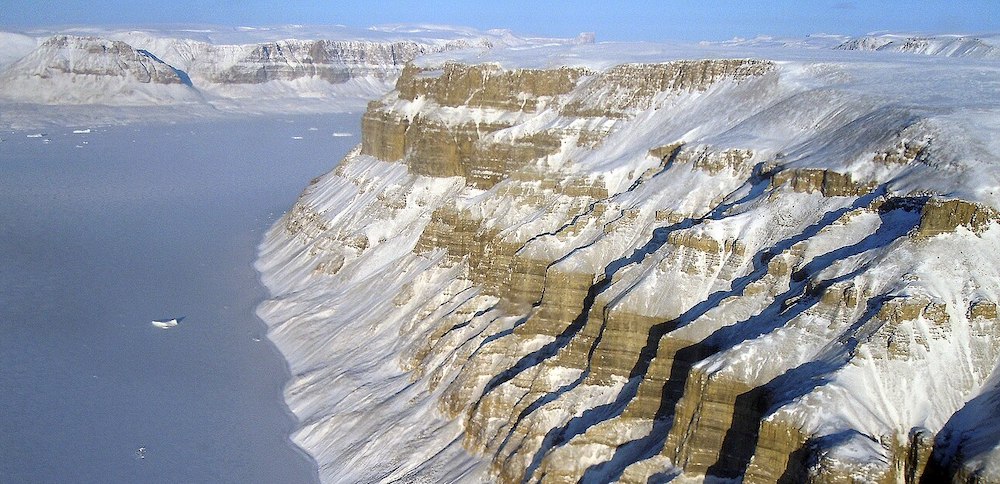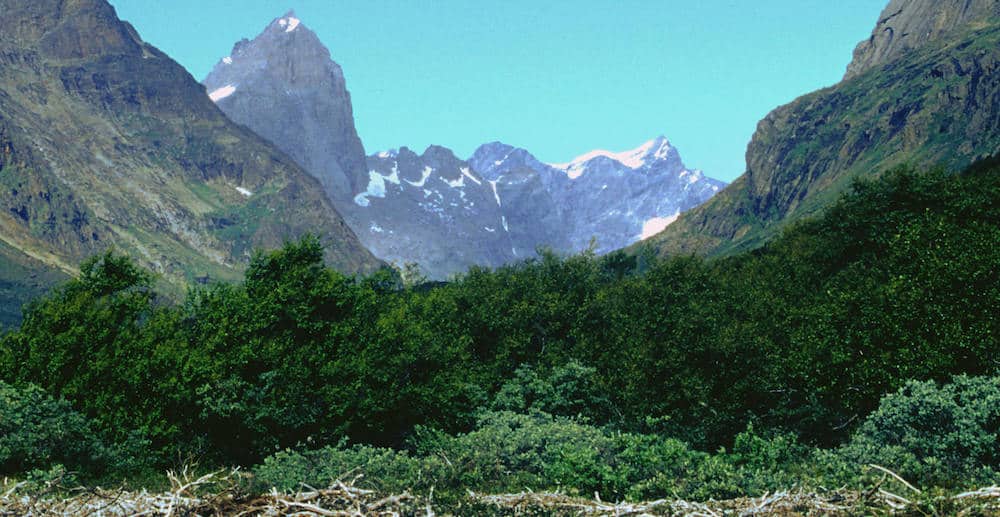Greenland

Greenland is a North American island autonomous territory of the Kingdom of Denmark. It is the larger of two autonomous territories within the Kingdom, the other being the Faroe Islands; the citizens of both territories are full citizens of Denmark. As Greenland is one of the Overseas Countries and Territories of the European Union, citizens of Greenland are European Union citizens. In 1979, Denmark granted home rule to Greenland, making it an equal member of the Danish Realm. Though a part of the continent of North America, Greenland has been politically and culturally associated with Europe (specifically Norway and Denmark, the colonial powers) for more than a millennium, beginning in 986. It has a population of around 57,000 people, so is the least densely populated country.
It lies between the Arctic and Atlantic oceans, east of the Canadian Arctic Archipelago. The Atlantic Ocean borders Greenland’s southeast; the Greenland Sea is to the east; the Arctic Ocean is to the north; and Baffin Bay is to the west. The nearest countries are Iceland, east of Greenland in the Atlantic Ocean, and Canada, to the west and across Baffin Bay. The capital and largest city of Greenland is Nuuk. It is the world’s largest island that is not a continent in its own right, and is the location of the northernmost point of land in the world – Kaffeklubben Island off the northern coast is the world’s northernmost undisputed point of land. The total area of Greenland measures over 2,166,000 km² (c.836,000 square miles), of which the Greenland ice sheet covers over 1,755,000 km² (c.677,000 square miles) (81%) and has a volume of approximately 2.85 million km3. The coastline of Greenland is 39,330 km (24,430 miles) long, about the same length as the Earth’s circumference at the Equator. The highest point on Greenland is Gunnbjørn at 3,694 metres (12,119 ft). However, the majority of Greenland is under 1,500 metres (5,000 ft) elevation.
At least four scientific expedition stations and camps had been established in the ice-covered central part of Greenland on the ice sheet: Eismitte, North Ice, North GRIP Camp and The Raven Skiway. Currently, there is a year-round station, Summit Camp, on the ice sheet, established in 1989. The radio station Jørgen Brøndlund Fjord was, until 1950, the northernmost permanent outpost in the world. The extreme north of Greenland, Peary Land, is not covered by an ice sheet, because the air there is too dry to produce snow, which is essential in the production and maintenance of an ice sheet. If the Greenland ice sheet were to completely melt away, worldwide sea levels would rise by more than 7m and Greenland would most likely become an archipelago.

Northwest Greenland Coast – ©NASA/Michael Studinger Public domain, via Wikimedia Commons
All towns and settlements of Greenland are situated along the ice-free coast, with the population being concentrated along the Western coast. The northeastern part of Greenland, which includes sections of North Greenland and East Greenland, is not part of any municipality, but is the site of the world’s largest national park, Northeast Greenland National Park.
Birding Greenland
Greenland is home to two ecoregions: Kalaallit Nunaat high arctic tundra and Kalaallit Nunaat low arctic tundra. The island is sparsely populated in vegetation; plant life consists mainly of grassland and small shrubs, which are regularly grazed by livestock. The most common tree native to Greenland is the European White Birch Betula pubescens along with Grey-leaf Willow Salix glauca, Rowan Sorbus aucuparia, Common Juniper Juniperus communis and other smaller trees, mainly willow species. Greenland’s flora consists of about 500 species of higher plants, i.e. flowering plants, ferns, horsetails and lycopodiophyta. Of the other groups, the lichens are the most diverse, with about 950 species; there are 600–700 species of fungi; mosses and bryophytes are also found. Most of Greenland’s higher plants have circumpolar or circumboreal distributions; only a dozen species of saxifrage and hawkweed are endemic. A few plant species were introduced by the Norsemen, such as cow vetch.

Qinngua Valley, the only natural forest in Greenland – ©Svickova, Public domain, via Wikimedia Commons
There are approximately 700 known species of insects in Greenland, which is low compared with other countries. The sea is rich in fish and invertebrates, especially in the milder West Greenland Current; a large part of the Greenland fauna is associated with marine-based food chains, including large colonies of seabirds. The few native land mammals in Greenland include the Polar Bear, Reindeer (introduced by Europeans), Arctic Fox, Arctic Hare, Musk Ox, Collared Lemming, Ermine and Arctic Wolf. The last four are found naturally only in East Greenland, having immigrated from Ellesmere Island. There are dozens of species of seals and whales along the coast. Whale species include the Beluga, Blue, Greenland, Fin, Humpback, Minke, Sperm, Pilot Whale and Narwhal. Land fauna consists predominantly of animals which have spread from North America or, in the case of many birds and insects, from Europe. There are no native or free-living reptiles or amphibians on the island. As of 2009, 269 species of fish from over 80 different families are known from the waters surrounding Greenland. Almost all are marine species with only a few in freshwater, notably Atlantic Salmon and Charr.
Birds, particularly seabirds, are an important part of Greenland’s animal life; they consist of both Palaearctic and Nearctic species, breeding populations of auks, puffins, skuas, and kittiwakes are found on steep mountainsides. Greenland’s ducks and geese include Common Eider, Long-tailed Duck, King Eider, White-fronted, Pink-footed and Barnacle Geese. Breeding migratory birds include Snow and Lapland Buntings, Ringed Plover, Red-throated Diver and Red-necked Phalarope. Non-migratory land birds include the Arctic Redpoll, Ptarmigan, Short-eared Owl, Snowy Owl, Gyrfalcon and White-tailed Eagle.
-
Wikipedia
GNU Free Documentation License
https://en.wikipedia.org/wiki/Greenland
-
Number of bird species: 254
(As at April 2025)
-
Avibase
PDF ChecklistThis checklist includes all bird species found in Greenland , based on the best information available at this time. It is based on a wide variety of sources that I collated over many years. I am pleased to offer these checklists as a service to birdwatchers. If you find any error, please do not hesitate to report them. -
ResearchGate
Annotated ListA downloadable annotated checklist to the birds of Greenland -
Wikipedia
Annotated ListThis is a list of the bird species recorded in Greenland. The avifauna of Greenland include a total of 251 species as of May 2023 according to Bird Checklists of the World.[1] Of them, 176 are rare or accidental. One species is extinct (the great auk, another probably is (the Eskimo curlew), and one has been extirpated (the house sparrow).
-
An Annotated Checklist to the Birds of Greenland
| By David Boertmann | Museum Tusculanum Press, University of Copenhagen | 1994 | Paperback | 63 pages, 1 map | ISBN: 9788763512251 Buy this book from NHBS.com
-
NP Northeast Greenland
InformationSatellite ViewThe National Park in Greenland is an Arctic paradise and a wilderness with wildlife that cannot be matched in the inhabited areas of the country. Located in the north-eastern corner of the country, the park is larger than any other national park in the world. However, due to its size and relative inaccessibility it is not a national park in the traditional sense. -
Protected Areas
InformationSatellite ViewThere are currently 12 protected areas in Greenland. The areas each have their own history and serve to protect unique landscapes or habitats for wildlife. It is possible to move about, fish and hunt in most of the protected areas. In some protected areas, there are restrictions on access and hunting and fishing in order to ensure the areas’ continued importance for wildlife.
-
Guide to Greenland
Day ToursPuffin Safari | Nuuk -
HeatherLea
Tour OperatorThis is a unique and genuinely outstanding experience, beginning with a land journey across Iceland focusing on birding and geology, and developing into a major adventure as we voyage north by comfortable ship to Scoresby Sound in Eastern Greenland, where Polar Bear, Muskoxen and whales are our targets. Birds, mammals, geology and cultural life are all aspects of this unforgettable holiday. On this tour, wildlife can be sparse, but when it happens .... can be stunning! -
Wildfoot
Tour OperatorArctic Cruises offer people the chance to see some of the most fantastic birds in the world and what better way of getting maximum experience and enjoyment than using a specialist Arctic cruise company like WILDFOOT.
-
2015 [06 June]
PDF ReportAlthough not reaching our intended destination further north due to unseasonal sea ice, we still had a thoroughly enjoyable cruise with highlights including multiple sightings of Humpback Whales, a very obliging Minke Whale and lots of birds including hundreds of Red-necked Phalaropes and superb views of White-tailed Eagle. All this coupled with a lot of good fun along the way. -
2017 [10 October] - Joshua Holko
ReportThere are few places on our planet as spectacular as the remote and wild east coast of Greenland. Its precipitous and towering glacier scarred mountains that line the many divergent fjords have created an otherworldly landscape that is just about photographic nirvana.
-
Birdwatching in Greenland
WebpageBirdlife in Greenland is characterised by the fact that there are only a few different species. However, this means that with relatively little effort you can get to know the most common bird species, and, in this way, quickly be ready to begin your bird adventure in Greenland. -
Studies of Migrating Birds in Greenland
WebsiteThe Department of Arctic Environment of the Danish Environmental Research Institute works primarily with environmental studies and monitoring in Greenland. Its main objectives are to assess the potential environmental impact of mineral resource exploration and exploitation, and to suggest mitigative measures…

